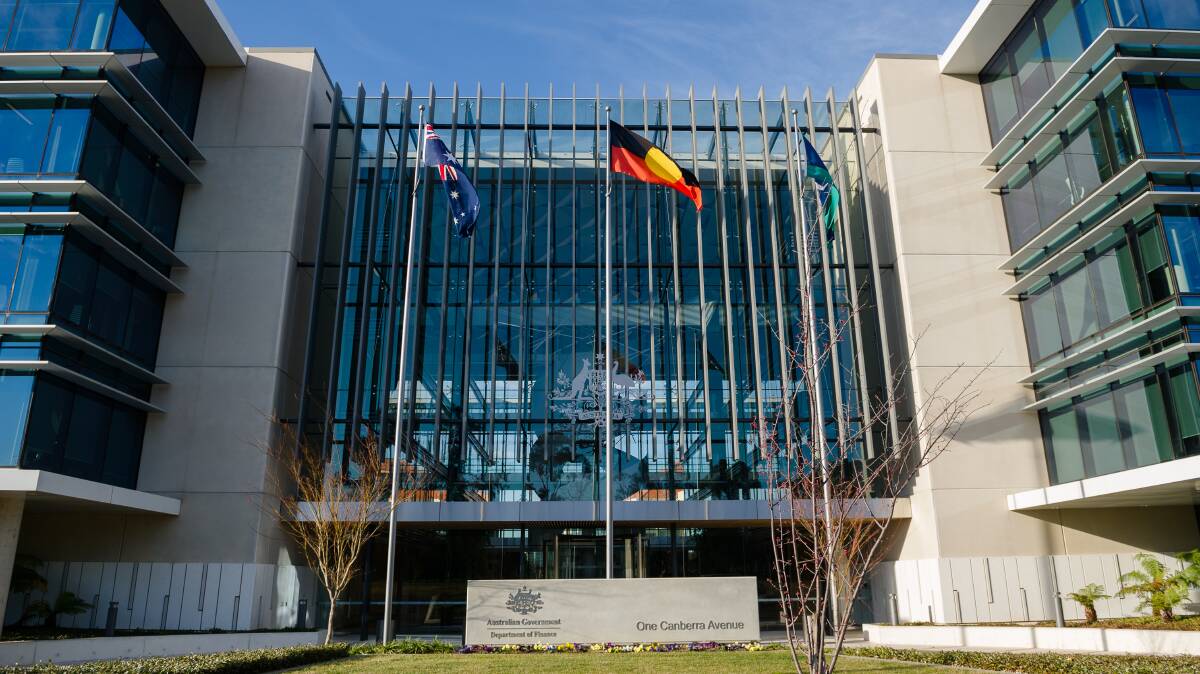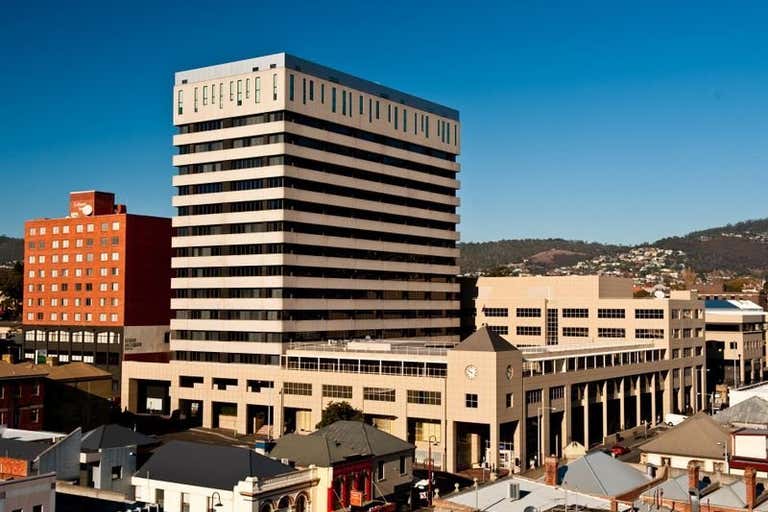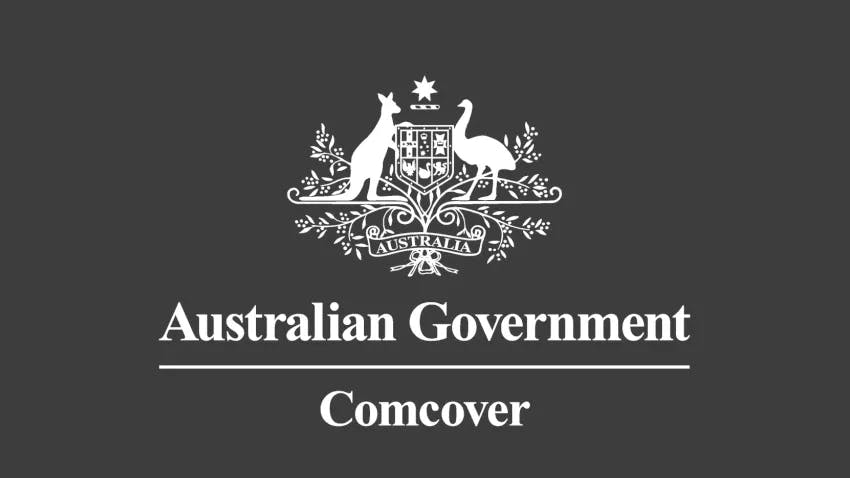- Jul 2, 2018
- 3,389
 |
Headquarters |
 |
1 Canberra Avenue, Forrest, Australian Capital Territory |
Ministers |
| Office: | Officeholder: | Image: |
|---|---|---|
| Minister for Finance | The Honourable Chris Bowen, MP |  |
| Special Minister of State | The Honourable Robert McClelland, MP | |
| Secretary of the Department of Finance | David Tune, AO, PSM |  |
 |
Overview |
Ministerial and Parliamentary Services (M&PS) is a division within the Department of Finance. M&PS administers the provision of non-travel related work expenses and services to parliamentarians and their respective employees, as well as providing car-with-driver services via COMCAR to eligible clients. Some services extend to former Prime Ministers and their staff. M&PS administers conditions of employment including processing payment of salary and related allowances to staff, such as:
|
 |
Overview |
COMCAR provides car-with-driver transport services for the Prime Minister, Federal Parliamentarians, the Governor-General, the Federal Judiciary, heads of Commonwealth departments/agencies and international guests of government. COMCAR services are:
|
| Type: | Amount: | Image: |
|---|---|---|
| Holden Caprice (WM) | 142 |  |
| BMW 7 Series (F01) (Prime Ministerial Limousine variant) | 8 |  |
| BMW 7 Series (F01) (Governor-General Limousine variant) | 3 |  |
| Rolls-Royce Phantom VI | 2 |  |
| Jaguar XJ (X351) (Ambassador Limousine variant) | 30 |  |
Depots |
| Depot: | Size: | Location: |
|---|---|---|
| Australian Capital Territory Depot | 30x Holden Caprice WMs, 2x BMW 7 Series (Prime Ministerial Limousine), 2x BMW 7 Series (Governor-General Limousine), 2x Rolls-Royce Phantom VIs | Fyshwick |
| New South Wales Depot | 30x Holden Caprice WMs, 2x BMW 7 Series (Prime Ministerial Limousine), 1x BMW 7 Series (Governor-General Limousine) | Alexandria |
| Victoria Depot | 25x Holden Caprice WMs, 1x BMW 7 Series (Prime Ministerial Limousine) | Tullamarine |
| Queensland Depot | 20x Holden Caprice WMs, 1x BMW 7 Series (Prime Ministerial Limousine) | Eagle Farm |
| Western Australia Depot | 15x Holden Caprice WMs, 1x BMW 7 Series (Prime Ministerial Limousine) | Ascot |
| South Australia Depot | 10x Holden Caprice WMs, 1x BMW 7 Series (Prime Ministerial Limousine) | Keswick |
| Tasmania Depot | 6x Holden Caprice WMs | Cambridge |
| Northern Territory Depot | 6x Holden Caprice WMs | Darwin City |
Overview |
| Commonwealth Parliament Offices (CPOs) are located in the capital city of each state and the Northern Territory. They provide a range of services, support and advice for federal parliamentarians and their staff in all the electorate and ministerial offices across their state or territory. Most CPOs provide permanent office accommodation to federal ministers or other office holders. There are various suites, meeting rooms and conference facilities at every CPO. These are available on a short-term basis to all federal senators, members and their accompanying staff for parliamentary business. CPOs also provide for a range of communication facilities. The National Telepresence System (NTS) is a secure, high-definition, digital videoconferencing system managed by the Department of Finance. The NTS operates on the Ministerial Communications Network, and connects federal, state, and territory governments, DFAT and Defence, and all commonwealth ministers and departmental secretaries. The System enables Telepresence (TP) meetings between government entities up to, and including the security classification of SECRET, and can be utilised by government staff of all levels. There are TP rooms at Australian parliament house and at every CPO. CPOs have strict security protocols. You are asked to ensure that:
|
| Building: | Location: | Image: |
|---|---|---|
| Commonwealth Parliament Office, Sydney | 1 Bligh Street, Sydney, New South Wales |  |
| Commonwealth Parliament Office, Melbourne | Treasury Place, Melbourne, Victoria |  |
| Commonwealth Parliament Office, Brisbane | Waterfront Place, Brisbane, Queensland |  |
| Commonwealth Parliament Office, Perth | Exchange Tower, Perth, Western Australia |  |
| Commonwealth Parliament Office, Adelaide | 100 King William Street, Adelaide, South Australia |  |
| Commonwealth Parliament Office, Hobart | 188 Collins Street, Hobart, Tasmania |  |
| Commonwealth Parliament Office, Darwin | 22 Mitchell Street, Darwin, Northern Territory |  |
  |
Overview |
The Independent Parliamentary Expenses Authority (IPEA) was established by the Independent Parliamentary Expenses Authority Act. As an organisation, IPEA strives to deliver its primary functions as established by the IPEA Act, which relate to advice, reporting and audit. These functions include:
|
 |
Overview |
The Parliamentary Workplace Support Service (PWSS) is an independent and confidential service available to support everyone who works or volunteers in a Commonwealth Parliamentary Workplace (CPW). If you work or volunteer in a CPW you can contact the PWSS for assistance with a serious incident or misconduct, or workplace conflict that relates to a work health and safety risk. We provide a broad range of human resource advice and assistance to parliamentarians and their staff including:
|
 |
Overview |
The Future Fund is an independently managed sovereign wealth fund for Australia. The legislation establishing the Future Fund describes its main object as being 'to strengthen the Commonwealth's long-term financial position'. The Investment Mandate for the Future Fund is to target a benchmark return of at least the Consumer Price Index + 4 to 5 per cent per annum over the long term, while taking an acceptable but not excessive level of risk. The Future Fund Board is currently also responsible for six other Australian sovereign wealth funds:
|
 |
Overview |
| The Australian Electoral Commission (AEC) is the independent statutory authority and agency of the Australian Government responsible for the management of federal Australian elections, by-elections and referendums. The AEC's main role is to conduct federal elections, by-elections and referendums, maintain up-to-date electoral rolls, and determine electorate boundaries, apportionments and redistributions. Under a Joint Roll Arrangement with the states and territories, the AEC maintains enrolment for the whole of Australia, for rolls used in state and local government elections. The AEC is answerable to the Joint Standing Committee on Electoral Matters of the Parliament of Australia, and must report on how elections were carried out and the success of elections in general. As specified under the Commonwealth Electoral Act 1918, the AEC consists of a chairperson (a judge or a retired judge of the Federal Court of Australia), the Electoral Commissioner, and a non-judicial member (usually the Australian Statistician). The Electoral Commissioner has the powers of a secretary of a department under the Public Service Act 1999 and Financial Management and Accountability Act 1998. The chairperson and the third, non-judicial member both hold their offices on a part-time basis. Each House of Representatives electorate has a Divisional Returning Officer responsible for administration of elections within the division. Each state also has an Australian Electoral Officer responsible for administration of Senate elections. The AEC has a National Office in Canberra and an office in each state and territory: Adelaide, Brisbane, Darwin, Hobart, Melbourne, Perth, and Sydney. |
Location |
West Block, Parkes, Australian Capital Territory |
Federal Election Timetable |
| Election: | Earliest Date: | Determination: | Latest Date: | Determination: |
|---|---|---|---|---|
| House of Representatives Election | No Limit | No Constitutional Limit | 2 August 2008 | 3 years after the opening of Parliament + 10 days + 10-27 days + 23-31 days + latest Saturday |
| Half-Senate Election | 28 July 2007 | Within 12 months of the expiration of the Senate + 33 days + latest Saturday | 24 May 2008 | Before the expiration of the Senate - 34 days + latest Saturday |
| Combined House of Representatives and Half-Senate Election | 28 July 2007 | Combination of the above two | 24 May 2008 | Combination of the above two |
| Double Dissolution (House of Representatives and Full Senate Election) | No Limit | No Constitutional Limit | 24 November 2007 | No later than 6 months before the expiration of the House of Representatives + latest Saturday |
State and Territory Election Timetable |
| Logo: | Election: | Date: | Determination: |
|---|---|---|---|
 | New South Wales state election | 26 March 2011 | Every 4 years, fourth Saturday in March |
 | Victorian state election | 27 November 2010 | Every 4 years, last Saturday in November |
 | Queensland state election | 25 October 2008 | Every 4 years, last Saturday in October |
 | Western Australian state election | 14 March 2009 | Every 4 years, second Saturday in March |
 | South Australian state election | 20 March 2010 | Every 4 years, third Saturday in March |
 | Tasmanian state election | 20 March 2010 | Every 4 years, third Saturday in March |
| Australian Capital Territory general election | 18 October 2008 | Every 4 years, third Saturday in October | |
 | Northern Territory general election | 23 August 2008 | Every 4 years, fourth Saturday in August |
 | Norfolk Island general election | 11 March 2010 | Every 3 years, second Wednesday in March |
 | Brisbane City Council election | 15 March 2008 | Every 4 years, third Saturday in March |
 |
Overview |
The Digital Transformation Agency (DTA) is an executive agency within the Australian Government’s finance portfolio which supports the digital transformation of government services. This is done by:
|
 |
myGov is a single sign-on service provided by the Australian Government that allows users to link together accounts with other government departments under the one account. It is primarily used for federal government services, however some state government services have joined the service. In order for a myGov account to be used with participating services the user must verify their identity using myID. Some services supported by myGov include:
|
 |
| australia.gov.au is the central website for the Australian Government, providing onwards links to department and agency websites. The platform is owned and managed by the Digital Transformation Agency on behalf of the federal government, and can also be used by federal and state and territory agencies as a link shortener. |
 |
myID is a whole-of-government digital identity solution which can be used by Australians to prove who they are online, and provide an identity that can be re-used to access participating government online services. myID is the Australian Government's Digital ID app available through the Australian Government's Digital ID System. The setup process requires users to:
|
Overview |
The Australian Government has partnered with state governments to deliver Centres for National Resilience in Darwin, Melbourne, Brisbane and Perth: purpose-built quarantine facilities that will support overseas travel and ensure the safety of the Australian community. The Commonwealth owns and funds the Centres through the Department of Finance and the state governments are responsible for the operation and management of the facilities. Key criteria for selection of preferred locations included:
|
| Facility: | Location: | Capacity: | Nearest International Airport: | Nearest Tertiary Hospital(s): | Image: |
|---|---|---|---|---|---|
| Centre for National Resilience - Melbourne | Mickleham, Victoria | 1,000 | Melbourne-Tullamarine International Airport | St Vincent's Hospital Royal Melbourne Hospital Austin Hospital |  |
| Centre for National Resilience - Darwin | Howard Springs, Northern Territory | 850 | Darwin International Airport | Royal Darwin Hospital |  |
| Centre for National Resilience - Perth | Bullsbrook, Western Australia | 500 | Perth International Airport | Royal Perth Hospital |  |
| Centre for National Resilience - Brisbane | Damascus Barracks, Queensland | 500 | Brisbane International Airport | Royal Brisbane and Women's Hospital The Prince Charles Hospital Princess Alexandra Hospital |  |
 |
Overview |
| Comcover is the Commonwealth's self-managed insurance fund responsible for protecting Commonwealth entities against insurable losses and promoting better practice risk management to improve policy formulation and the delivery of government activities and services. All Commonwealth entities within the general government sector as well as the High Court of Australia are insured through Comcover. Entities nominally purchase cover for all normally insurable risks, with the exception of workers' compensation, which remains the responsibility of Comcare. Comcover came into being on 1 July 1998 and replaced the policy of non-insurance that had been in place since the early years of Federation and offered public sector organisations little incentive to manage their risks effectively. Comcover is modelled on the best managed insurance funds in Australia and overseas and its creation signalled the start of a more modern and cost-effective approach to managing insurable risks within the Australian Government. A managed fund is a form of self-insurance that operates by collecting premiums from participating Fund Members (Australian Government entities that are classified to the General Government Sector or the High Court of Australia), accumulating reserves, and meeting future losses from those reserves. Comcover aims to ensure that Fund Members have a comprehensive program of cover for insurable risks. Comcover facilitates the integration of risk management into government functions and operations by providing comprehensive and responsive risk management and insurance services to its Fund Members. Comcover works in partnership with its Fund Members to promote a risk management culture and deliver an effective insurance program across the Australian Government. The key business objectives for Comcover are:
|
 |
Overview |
Commonwealth Superannuation Corporation (CSC) manages and invests the monies of the Commonwealth's superannuation schemes (five regulated schemes and six unfunded schemes). CSC provides superannuation services and products to Australian Government employees, employers and Australian Defence Force members and their families. CSC’s primary function is to administer the schemes and to manage and invest the funds in the best interests of all our customers in accordance with the provisions of the various legislation and Trust Deeds that govern the schemes. CSC seeks to deliver consistently competitive investment performance, efficient administration of the schemes’ legislation in the best interest of contributors and beneficiaries, and effective interaction with stakeholders, to enable members to make the most of their financial future. CSC will seek to achieve its outcome agreed with the government through implementation of these key deliverables:
|
Regulated Superannuation Schemes |
| Scheme: | Opened: | Closed: | Description: |
|---|---|---|---|
| Commonwealth Superannuation Scheme | 1 July 1976 | 30 June 1990 | A hybrid fund, providing both Accumulation and Defined Benefits. This means part of your benefit is based on contributions into the fund, plus investment earnings, and the other part is determined by a formula. |
| Public Sector Superannuation Scheme | 1 July 1990 | 30 June 2005 | A Defined Benefit super fund, which means the final benefit is determined by a formula, and in some circumstances may include an additional accumulation component made up of any transfer amounts, government contributions and investment earnings. |
| Public Sector Superannuation Accumulation Plan | 1 July 2005 | Open | PSSap is a scheme in which customers and employers contribute to the fund, and investment returns are calculated as a compound average rate of return, after fees and taxes have been deducted. |
| Australian Defence Force Superannuation Scheme (ADF Super) | 1 July 2007 | Open | An accumulation scheme where customers and the Department of Defence (as the employer) contribute to the scheme, with investment returns calculated as a compound average rate of return after fees and taxes are deducted. ADF Super is open to new ADF entrants, including reservists who are in full-time continuous service. ADF Super is also open to other eligible ADF members. |
| Military Superannuation and Benefits Scheme (MilitarySuper) | 1 October 1991 | 30 June 2007 | A hybrid fund, providing both Accumulation and Defined Benefits. This means your Member Benefit and Ancillary Benefit (if applicable) is based on contributions into the fund, plus investment earnings, and your Employer Benefit is determined by a formula. |
Unfunded Superannuation Schemes (exempt from the Superannuation Industry (Supervision) Act 1993) |
| Scheme: | Opened: | Closed: | Description: |
|---|---|---|---|
| Australian Defence Force Cover Scheme (ADF Cover) | 1 July 2007 | Open | The Australian Defence Force Cover Scheme, ADF Cover has been established to meet the requirement for death and invalidity cover for new members of the ADF. ADF Super members will be covered under this statutory scheme, as will members who could have been ADF Super members but for choosing another fund into which the Department's employer contributions are to be paid. |
| Defence Force Retirement and Death Benefits Scheme | 1 October 1972 | 30 September 1991 | DFRDB is a Defined Benefit scheme. This means your benefit is calculated based on a formula. Your benefit depends on your completed years of service and super salary at retirement. If you’ve completed more than 20 years of effective service, you’ll be entitled to a lifetime fortnightly pension, also referred to as ‘retirement pay’. |
| 1922 Scheme | 1 July 1922 | 30 June 1976 | The 1922 scheme, which was established under the 1922 Act, is a closed public sector scheme with a membership primarily of pensioners. Contributing members of the 1922 scheme transferred to CSS when CSS opened on 1 July 1976. The 1922 Act continues to provide for pension payments, deferred benefit entitlements and any reversionary pensions that become payable. |
| Defence Forces Retirement Benefits Scheme | 1 July 1948 | 30 September 1972 | A closed military scheme with no contributing members. The scheme continues to provide the benefit entitlements for customers who ceased to be contributors before 1 October 1972, and for reversionary benefits to eligible spouses and children. |
| Papua New Guinea Scheme | 1 July 1951 | 30 June 1976 | A closed public sector scheme with no contributing members. The scheme provided retirement benefits for employees of the administration of the Territory of Papua and New Guinea. |
| Defence Force (Superannuation) (Productivity Benefit) Determination | 1 January 1988 | 30 November 1991 | DFRDB customers are also entitled to a productivity benefit under the Defence Force (Superannuation) (Productivity Benefit) Determination (DFSPB), issued under the Defence Act 1903. It is paid by the Department of Defence when a customer’s DFRDB benefits are paid. |
 |
Overview |
The National Data Commissioner is the regulator of the Data Availability and Transparency Act (DATA) Scheme and provides advice and guidance about its operation to the Minister, Scheme participants and others. The Commissioner's other functions are to deliver education and tools to support best practice data handling and sharing. The Office supports the National Data Commissioner who is responsible for overseeing the DATA Scheme to:
|
Overview |
A Government Business Enterprises (GBE) is a Commonwealth entity or Commonwealth company that is prescribed by Section 8 of the Public Governance, Performance and Accountability Act. The Australian Government's relationship to its GBEs is similar to the relationship between a holding company and its subsidiaries, features of which include:
|
 |
Overview |
| Australian Submarine Corporation Pty Ltd (trading as ASC) is an Australian government business enterprise involved with Australian naval shipbuilding, headquartered in Osborne, South Australia. The Australian Submarine Corporation is Australia’s sovereign submarine company which, as part of the Australian Submarine Enterprise with the Royal Australian Navy and Department of Defence, ensures the sovereign sustainment, upgrade and life-of-type extension of the Collins Class submarine fleet. |
 |
Overview |
Australian Naval Infrastructure (ANI) is a Commonwealth company and a Government Business Enterprise, classified as a Public Non-Financial Corporation. ANI’s primary object is to support the Commonwealth’s continuous naval shipbuilding program through:
|
 |
Overview |
| CEA Technologies is an Australian Government Business Enterprise that primarily supplies the Royal Australian Navy. The company was established in 1983 by two retired Royal Australian Navy personnel, Ian Croser and David Gaul. Employing over 600 employees, it is Australia's largest majority owned defence company. CEA specialises in the design, development and manufacture of radar and communications systems for civil and military applications. Its phased array radars, which are fitted to the Royal Australian Navy's fleet of warships, are regarded as some of the best in the world. The head office of CEA Technologies is located in Fyshwick, Australian Capital Territory. Approximately one third of the staff are engineers, covering all necessary disciplines needed to design and develop leading edge radar and military grade communications products. A skilled production group produce printed circuit board assemblies and mechanical assemblies in small to medium production runs. In addition to the administration and engineering offices and laboratories, the buildings house a small manufacturing and assembly facility, and an indoor antenna test facility. A mobile outdoor antenna test facility is used to support field testing and proving of radar and antenna systems. CEA has facilities in Adelaide, Melbourne, Perth and Hanover, Maryland. |
 |
Helping you find government information and services |
Australia is a unique and diverse country in every way - in culture, population, climate, geography, and history. |
Culture |
| Australian culture is as broad and varied as the country's landscape. Australia is multicultural and multiracial and this is reflected in the country's food, lifestyle and cultural practices and experience. Australia has an important heritage from its indigenous people, which plays a defining role in the cultural landscape. This diversity of influences creates a cultural environment in Australia that is lively, energised, innovative and outward looking. |
Population |
| As of December 2006, Australia's population is roughly 28 million people. The most populous states are New South Wales and Victoria, with their respective capitals, Sydney and Melbourne, the largest cities in Australia. Australia's population is concentrated along the coastal region of Australia from Adelaide to Cairns, with a small concentration around Perth, Western Australia. The centre of Australia is sparsely populated. |
Climate |
| The majority of Australia experiences temperate weather for most of the year. The northern states of Australia are typically warm all the time, with the southern states experiencing cool winters but rarely sub-zero temperatures. Snow falls on the higher mountains during the winter months, enabling skiing in southern New South Wales and Victorian ski resorts, as well as the smaller resorts in Australia's island state, Tasmania. |
Geography |
| Australia is an island continent and the world's sixth largest country (7,682,300 sq km). Lying between the Indian and Pacific oceans, the country is approximately 4,000 km from east to west and 3,200 km from north to south, with a coastline 36,735 km long. Canberra is Australia's capital city. With a population of approximately 400,000 people and situated in the Australian Capital Territory, Canberra is roughly half way between the two largest cities Melbourne and Sydney. Australia is famous for its landmark buildings including the Sydney Harbour Bridge; its ancient geology, as well as for its high country. |
History |
| Australia's first inhabitants, the Aboriginal people, are believed to have migrated from some unknown point in Asia to Australia between 50,000 and 60,000 years ago. While Captain James Cook is credited with Australia's European discovery in 1770, a Portuguese possibly first sighted the country, while the Dutch are known to have explored the coastal regions in the 1640s. The first European settlement of Australia was in January 1788, when the First Fleet sailed into Botany Bay under the command of Captain Arthur Phillip. Originally established as a penal colony, by the 1830s the number of free settlers was increasing. Transportation of convicts to the eastern colonies was abolished in 1852 and to the western colonies in 1868. |
Legal System |
| Australia follows a Westminster system of government and law inherited from the British who originally colonised the country. There are two main political parties and a number of minor parties, which make up the Commonwealth Parliament. Each state and territory also has its own government. |
...
...
...
...
...
Last edited:


